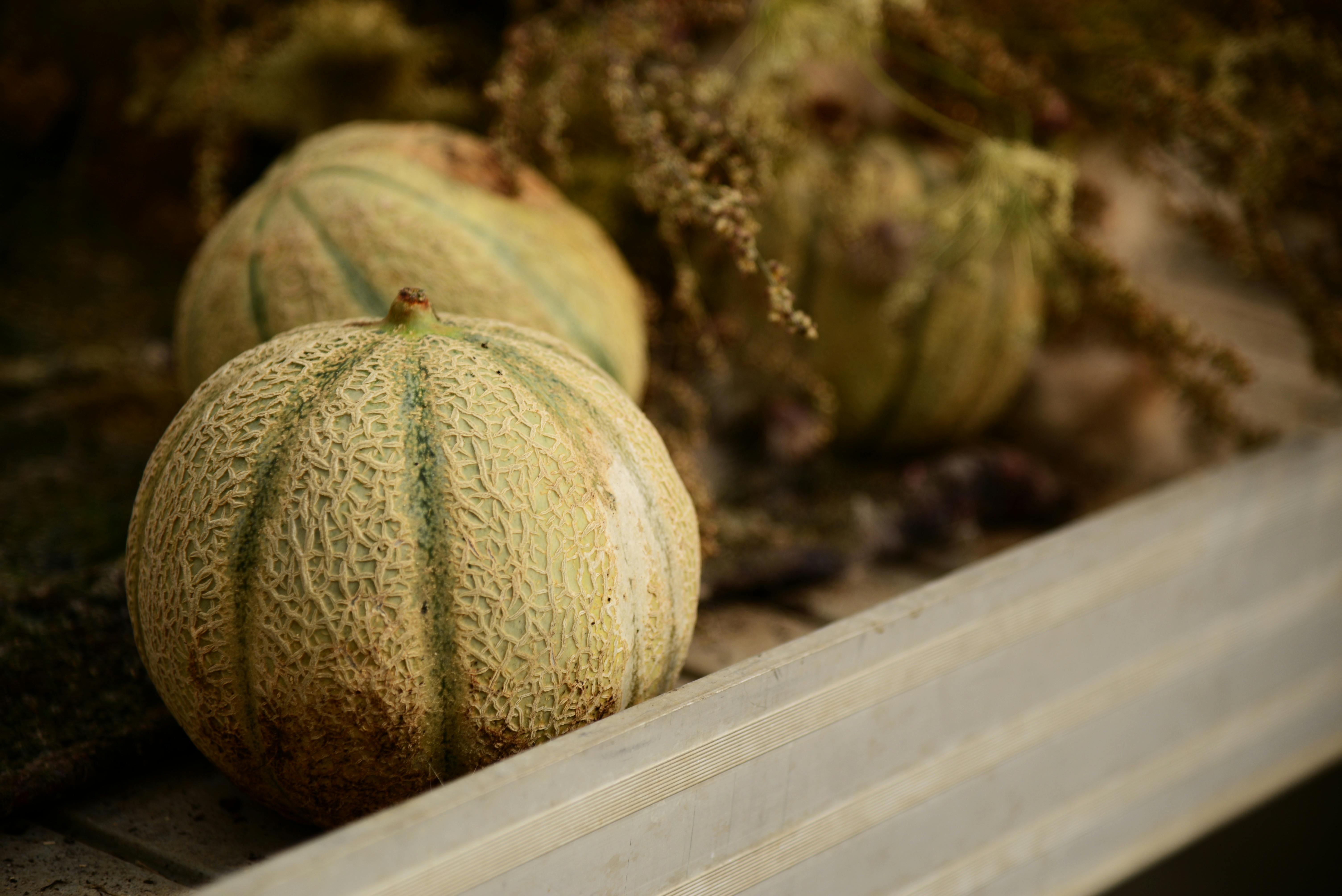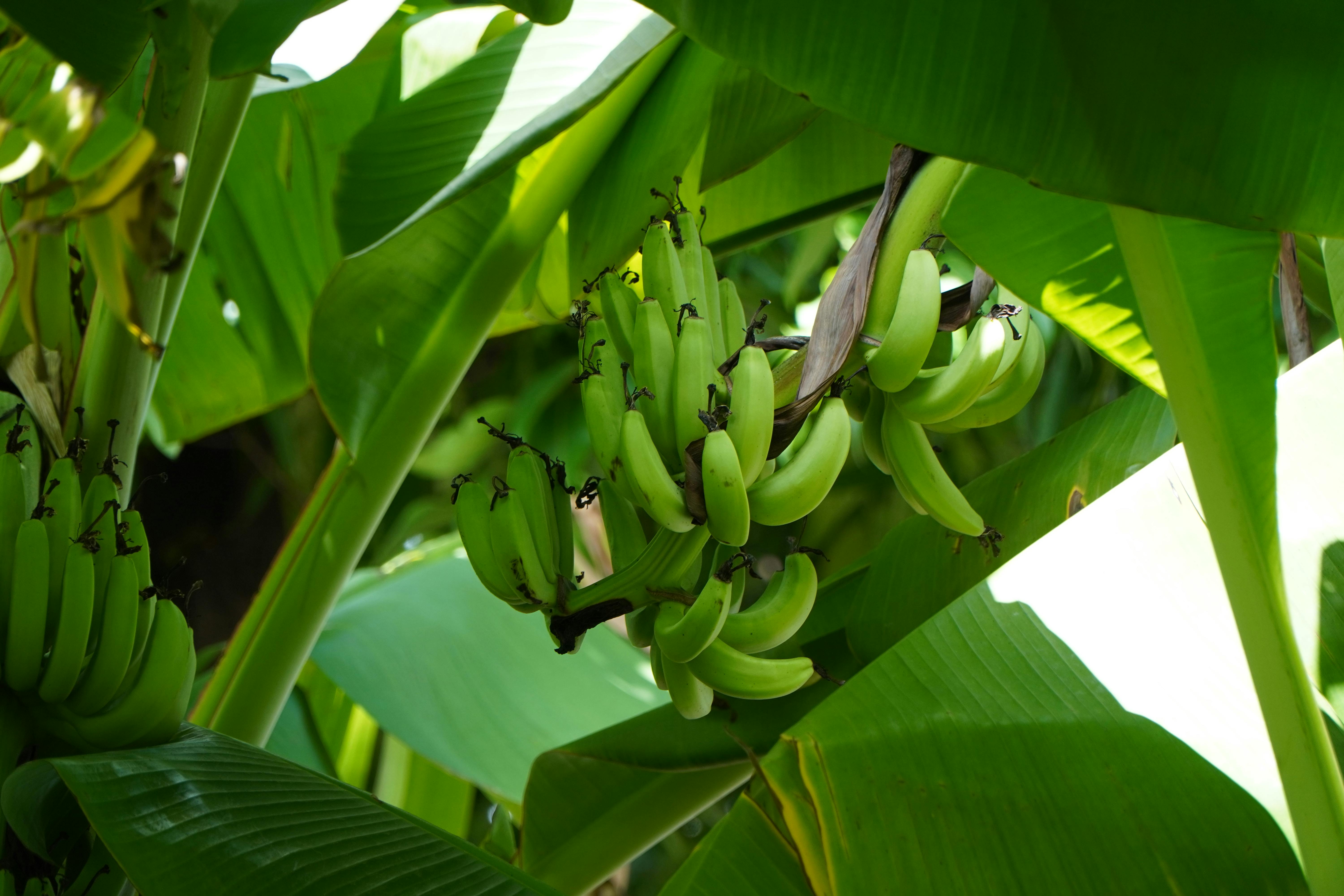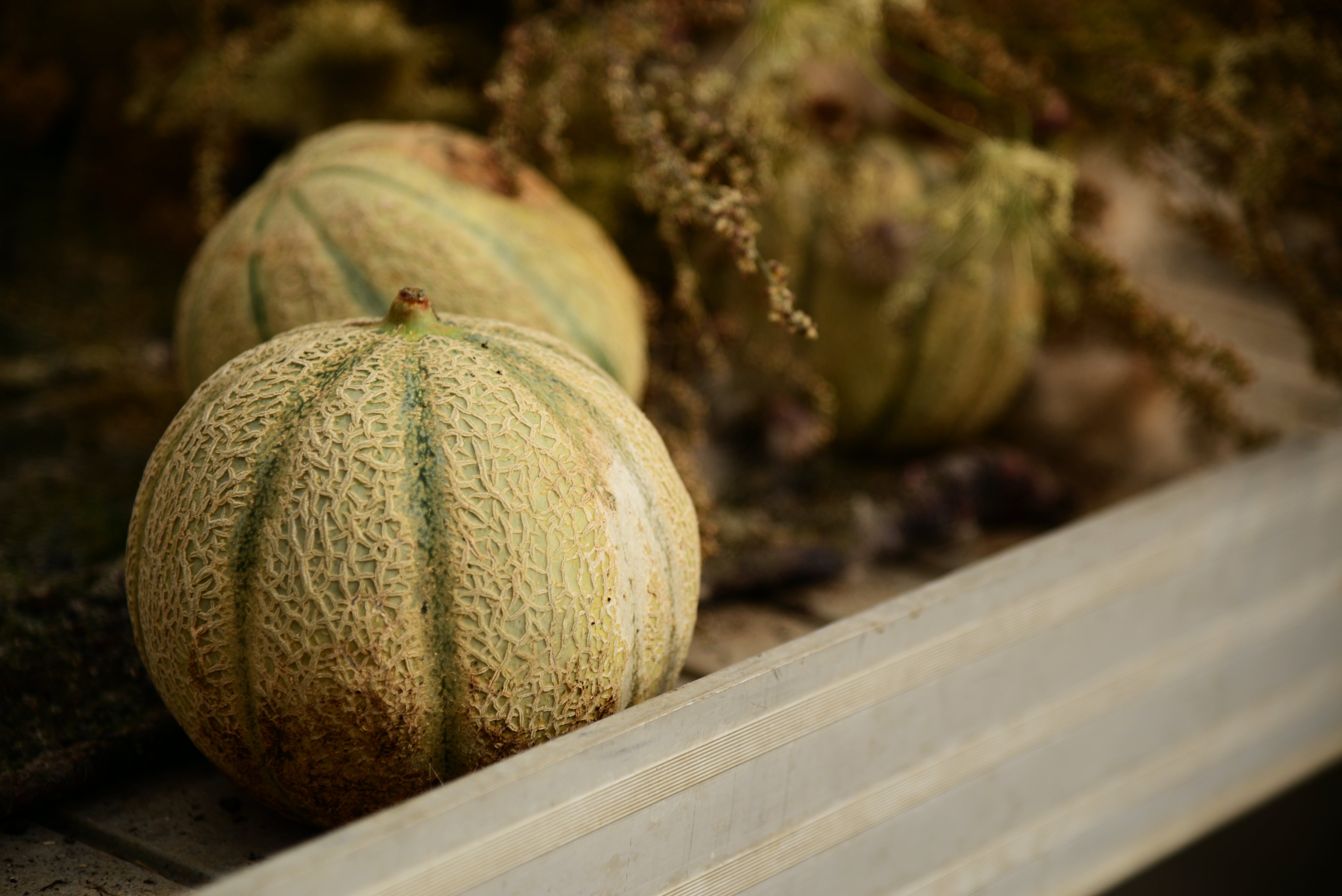Medlar fruit, also known as Mespilus germanica, is a unique, winter-hardy species of deciduous tree that is native to Europe and Asia. It has been widely cultivated for its edible fruits, which are known as medlars. The fruits have a unique flavor that can be described as sweet yet slightly acidic and have a custard-like texture. Medlar fruits are typically harvested in late autumn or early winter and can be eaten fresh or cooked into preserves, jams, and jellies. The tree itself is valued for its ornamental qualities as it produces small white flowers in the springtime followed by the medlar fruits in the fall.Medlar Fruit is a type of small, brown-skinned fruit native to southern Europe and southwest Asia. It is a member of the rose family and is closely related to apples, pears, and quinces. The Medlar Fruit has a sweet-sour taste and a soft texture, similar to a date or a raisin when it ripens. The unripe fruit has an astringent taste, which mellows when the fruit ripens. Medlar Fruit can be eaten raw or cooked in pies or jams.
Nutritional Benefits of Medlar Fruit
Medlar fruit is a nutrient-rich, tart-tasting fruit that is native to Europe, North Africa, and Asia. It has long been used in traditional medicine and is now gaining popularity among health-conscious individuals due to its numerous nutritional benefits. Medlar fruit contains significant amounts of vitamins A, C, and E, as well as minerals like calcium and iron. It also contains high amounts of dietary fiber, which aids in digestion. Additionally, it is rich in antioxidants that help protect the body from free radical damage.
The high levels of vitamin C found in medlar fruit make it a great source of immunity-boosting nutrients. Vitamin C helps to strengthen the immune system by increasing the production of white blood cells and antibodies which protect against infection and disease. Additionally, vitamin C is important for collagen production which helps to keep skin looking youthful and healthy.
Medlar fruit also contains high levels of calcium which is essential for strong bones and teeth. Calcium plays a role in muscle contractions as well as nerve transmissions throughout the body. In addition to calcium, medlar fruit provides iron which helps to carry oxygen throughout the body and prevents anemia. The dietary fiber found in medlar fruit aids digestion by helping to move food through the digestive tract more quickly which can help prevent constipation. Lastly, medlar fruit is high in antioxidants which help protect the body from free radical damage that can lead to various diseases such as cancer and heart disease.
In conclusion, medlar fruit offers numerous nutritional benefits that can be beneficial for overall health and wellness. Its high vitamin C content boosts immunity while its calcium content helps promote strong bones and teeth. Additionally, it provides iron for carrying oxygen throughout the body as well as dietary fiber for aiding digestion. Its antioxidant content also helps protect against free radical damage that can lead to diseases like cancer or heart disease.
How to Select Medlar Fruit
When selecting medlar fruit, look for ones that are firm and have an attractive orange-brown color. Avoid those that are overly soft or bruised. If possible, smell the medlars for a sweet, fruity aroma. The smell should be pleasant and not overly sour. It is also best to buy medlar fruits that have been kept in a cool place since they tend to spoil quickly at higher temperatures.
How to Store Medlar Fruit
Medlars should be stored in the refrigerator shortly after purchase to keep them fresh. Place them in a paper bag or container with holes to allow air circulation and prevent moisture build-up. They will keep for up to two weeks when stored properly. Once the fruits have been peeled or cut, they should be eaten immediately as they can quickly spoil due to their high water content.
How to Eat Medlar Fruit
Medlar fruit is a unique and tangy treat that has been enjoyed for centuries. It is often found in the form of dried fruits or jams, but it can also be eaten fresh. Eating medlar fruit fresh is the best way to experience its unique taste and texture. Here are some tips for how to enjoy this unique fruit:
The first step in enjoying medlar fruit is to pick it ripe. Medlars are usually ready for eating when they are slightly soft and have a rich, golden color. Unripe medlars will not be as flavorful or enjoyable.
Once you have picked the perfect medlar, you can enjoy it as is or prepare it in various ways. Medlars can be eaten raw, cooked into jam or jelly, stewed with other fruits and vegetables, or added to desserts like pies and tarts. They can also be blended into smoothies and juices for an extra nutrition boost.
When eating raw medlars, make sure to remove the skin before consuming the juicy interior. The skin of the medlar is tough and astringent, so it should not be eaten without being removed first. If you are preparing medlars for jams or jellies, you will need to remove both the skin and stone that contains the seed first.
No matter how you decide to enjoy medlar fruit, make sure to enjoy every bite! This unique fruity treat has been enjoyed all over the world for centuries, so why not add it your list of favorites?
Health Benefits of Eating Medlar Fruit
Eating medlar fruit provides numerous health benefits. Medlar is a deciduous tree, native to the Mediterranean region and parts of Asia. It produces small yellow-green fruits with sweet flesh and a unique taste. The medlar fruit is an excellent source of vitamin C, dietary fiber, and minerals such as iron, magnesium, potassium, and copper. It also contains antioxidants which can help protect against oxidative damage.
Medlar fruit has been shown to have anti-inflammatory properties which can help reduce inflammation in the body. This can be beneficial for people suffering from arthritis or other inflammatory diseases. It also helps lower cholesterol levels, which can reduce the risk of heart disease and stroke. Additionally, medlar fruit contains compounds that may help regulate blood sugar levels and improve insulin sensitivity. This could be beneficial for people with diabetes or those at risk for developing it.
The fiber in medlar fruit helps promote healthy digestion and regular bowel movements. It also helps keep you feeling full longer which can aid in weight loss or maintenance. Additionally, medlar fruits are rich in polyphenols which have been shown to protect against cancer cell growth and development.
Overall, medlar fruit is a nutrient-dense food that provides many health benefits. Eating just a few small fruits per day can provide your body with important vitamins and minerals as well as powerful antioxidants that can help protect against disease-causing free radicals. Additionally, its fiber content will help promote healthy digestion while its anti-inflammatory properties could be beneficial for people suffering from inflammatory conditions such as arthritis or diabetes.

Possible Side Effects of Eating Medlar Fruit
Consuming medlar fruit can have some potential side effects, especially if eaten in large amounts or if you have allergies to the fruit. These side effects can range from mild to severe, so it’s important to be aware of the possible risks before eating medlar fruit.
The most common side effect of eating medlar fruit is an upset stomach. This can be caused by consuming too much of the fruit, which can lead to nausea, vomiting, and abdominal pain. If you experience any of these symptoms after eating medlar fruit, it’s important to seek medical attention right away.
Another potential side effect is an allergic reaction. This can include hives, itching, swelling of the face or throat, and difficulty breathing. If you experience any of these symptoms after eating medlar fruit, it’s important to seek medical attention right away as an allergic reaction can be life-threatening.
It’s also possible for people with certain medical conditions or on certain medications to experience more severe side effects from consuming medlar fruit. If you are taking any medications or have a pre-existing medical condition, it’s important to speak with your doctor before consuming medlar fruit to make sure it won’t interact with your medication or worsen your condition.
Finally, in rare cases, eating large amounts of medlar fruit may cause hypoglycemia (low blood sugar). Symptoms of hypoglycemia include dizziness, confusion, headache, blurred vision and fatigue. If you experience any of these symptoms after eating medlar fruit it’s important to seek medical attention right away as hypoglycemia can be life-threatening if not treated quickly.
In general, eating moderate amounts of medlar fruit is safe for most people and may even offer some health benefits such as providing vitamins and minerals that are necessary for good health. However, it’s important to be aware of the potential side effects before consuming this type of food so that you can take steps to minimize your risk and stay healthy.
Medlar Fruit Recipes and Meal Ideas
Medlars are an ancient fruit that is gaining popularity in the modern world. This small, brown fruit is packed with vitamins, minerals, and antioxidants. It has a unique flavor that is sweet yet slightly tart. It can be used in many recipes and meal ideas to add a special touch to your meals. From medlar jelly to medlar syrup, there are many ways to incorporate this delicious fruit into your diet. Here are some recipes and meal ideas using medlar fruit:
Medlar Jam
Medlar jam is an easy way to enjoy the flavor of medlars all year round. All you need is sugar, water, and a few medlars. Boil the water and sugar together until it forms a thick syrup. Then add the medlars and continue boiling until the mixture thickens. Once it has reached the desired consistency, remove it from the heat and let cool before transferring it into jars for storage.
Medlar Cake
For a special treat, try baking a medlar cake! Start by mixing together butter, sugar, eggs, flour, baking powder and salt in a bowl until combined. Then fold in chopped medlars until evenly distributed throughout the batter. Grease a cake pan with butter or oil and pour in the batter before baking at 350°F (175°C) for 25-30 minutes or until golden brown on top.
Medlar Syrup
Make your own homemade medlar syrup for pancakes or waffles! Begin by simmering chopped medlars in water over low heat for about 30 minutes or until softened. Strain out any remaining solids before adding sugar to taste. Simmer for another 15 minutes before transferring into jars for storage.
Medlar Chutney
Chutney is a great way to add some zest to your meals. Start by heating oil in a pan over medium heat before adding chopped onions and garlic. Fry for about 5 minutes before adding chopped medlars along with some spices like cumin seeds or chili powder if desired. Cook for an additional 10 minutes before transferring into sterilized jars for storage.
These are just some of the recipes you can try using Medlars! Experiment with different combinations of flavors to find something that you love. Enjoy your delicious creations with friends and family!
Medlar Fruit: A Brief History
Medlar fruit, also known as Mespilus germanica, is a small, round fruit native to Europe and western Asia. It was first cultivated in the Middle Ages and has been a popular part of European cuisine ever since. The medlar tree was introduced to the United States in 1790 by Thomas Jefferson, but it is still not widely known or consumed in America.
The medlar fruit is an unusual looking fruit that looks like a cross between an apple and a pear. It has a brown color and its flesh is spongy and sweet when ripe. It has been described as having a flavor similar to that of dried figs or dates. The medlar tree can grow to heights of up to 15 feet and produces white flowers in the springtime.
The medlar fruit has long been used for medicinal purposes. In Ancient Greece, it was used as an astringent and to treat fever and sore throats. In traditional Chinese medicine, it was used as an effective remedy for diarrhea. In Europe, the leaves of the medlar tree were added to salads or cooked with meat dishes.
The medlar fruit is also eaten fresh or made into jams and jellies. In France, it is often served with cream cheese or hard cheese such as Roquefort or Brie. In Britain, it is sometimes served with custard or other rich desserts.
Medlars are not widely available in North America but can be found in some specialty stores or ordered online. They are considered a delicacy in some parts of Europe where they are still grown on small farms for local consumption.

Conclusion
Medlar fruit is a unique and delicious fruit that has a myriad of benefits. It is packed with essential vitamins, minerals, and fibers that can improve overall health. The fruit’s antioxidant properties can help protect against various diseases and boost the immune system. Additionally, its low glycemic index makes it a great choice for those looking to manage their blood sugar levels. Finally, its versatility in recipes makes it a great addition to any meal.
Overall, medlar fruit is an excellent choice for anyone looking to add more nutrition into their diet. It provides numerous health benefits and can be enjoyed in a variety of ways. From breakfast smoothies to afternoon snacks, medlar is sure to provide the perfect balance of flavor and nutrition.



